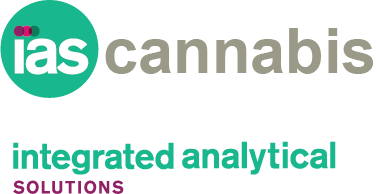SERVICES
Residual Solvents

Specimens:
Concentrates or infused cannabis flowers and oils
Detection Method:
Head Space Gas Chromatography with Mass Spectrometry (HS-GC-MS)
Action Limit:
Parts per million
Residual solvents are organic volatile chemicals such as butane, ethanol, propane, acetone, isopropanol, and carbon dioxide commonly used during the extraction of cannabinoids (like THC) and terpenes from cannabis plant material. Although manufacturers employ post-extraction techniques such as heat and vacuum purging to eliminate these solvents, trace amounts can sometimes remain in the final product.
The presence of residual solvents can pose health risks to consumers, especially when products are inhaled or ingested. Adverse effects can range from mild to severe, depending on the type and concentration of the solvent.
Accurate residual solvent testing is therefore essential to ensure product quality, manufacturing efficiency, and — most importantly — consumer safety. At IAS, we provide comprehensive residual solvent analysis to help producers meet regulatory standards and deliver safe, high-quality cannabis products to the market.
- 1,1 Dichloroethene
- 1,2 Dichloroethane
- Acetone
- Acetonitrile
- Benzene
- Butane
- Chloroform
- Ethanol
- Ethyl Acetate
- Ethyl Ether
- Ethylene Oxide
- Heptane
- Hexane
- Isopropyl Alcohol
- Methanol
- Methylene Chloride
- Pentane
- Propane
- Toluene
- Trichloroethylene
- Ortho-xylene
- Meta-xylene
- Para-xylene
Learn more about Microbes Pathogens Vitamine E Acetate Panels



